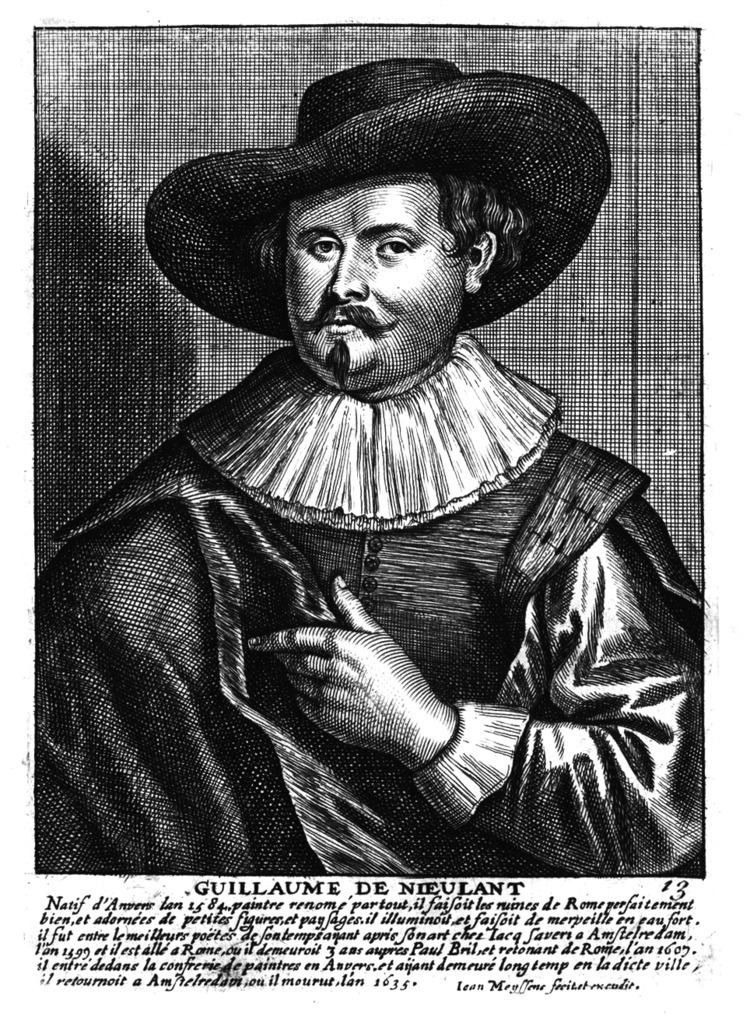Nationality Netherlands Period Baroque Role Poet | Name Willem Nieulandt Movement Baroque Known for Painting | |
 | ||
Full Name Willem van Nieulandt Born 1584 Antwerp Died 1635, Amsterdam, Netherlands Children Constancia Utrecht-van Nieuwlandt | ||
Willem or Guiliam van Nieulandt, sometimes Nieuwelandt (1584–1635) was a Dutch Golden Age painter, engraver, poet and playwright from Antwerp.
Contents
Biography
His father Adrien van Nieulandt the elder was born to a family of artists of Flemish origin from Antwerp. He moved with his family to Amsterdam in 1589, after the Siege of Antwerp, probably because they were Protestants. His three sons Willem van Nieulandt II (named for his uncle, also a painter), Adriaen van Nieulandt the younger, and Jacob van Nieulandt all became painters.
According to Arnold Houbraken, Willem was a pupil of Roelant Savery in Amsterdam, and he left him to travel to Rome, where he became a student of Paulus Bril. He specialized in painting artistic ruins of monuments, arches, and temples, many of which he then engraved himself. He returned to Amsterdam (via Antwerp) in 1607, and became a respected poet there as well as Italianate painter.
Nieulandt was better known as a poet and playwright than as a painter. He was a member of the Antwerp chamber of rhetoric the Olyftack (Olive Branch) from 1613 to 1621, transferring to the rival Violieren from 1621 to 1629. In May 1620 he won the prize for best poem at a rhetoric competition in Mechelen, writing under the pen name Dient uwen Al (Serve your All). In May 1624 the Violieren produced his play Aegyptica (a tragedy on the theme of Anthony and Cleopatra). His daughter Constantia, who later married Adriaen van Utrecht, was likewise a well regarded poet.
At some point after May 1629 he returned to Amsterdam, where he lived until his death in 1635.
